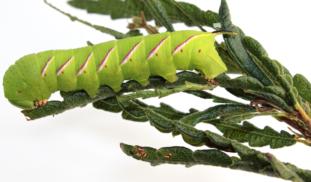Please wait...
About This Project
This project is aimed at understanding the morphological differences between two species of Sphingidae (Hawkmoths). Both species of Apple Sphinx, Sphinx gordius and Sphinx poecila, are found in the Northeastern USA. Due to similarities in appearance, they are hard to separate in the field. This project aims to develop field marks for both adults and larvae, and use those marks to assess the populations found within Massachusetts and evaluate their conservation need.
More Lab Notes From This Project

Browse Other Projects on Experiment
Related Projects
How do polar bears stay healthy on the world's worst diet?
Polar bears survive almost entirely on seal fat. Yet unlike humans who eat high-fat diets, polar bears never...
Uncovering hidden insect diversity associated with a likely undescribed gall-forming midge
Does a likely undescribed species of gall-forming midge (pers. comm. Ray Gagné) on Eriodictyon plants (Yerba...
Macrofungi of the California archipelago
The eight islands of the California Archipelago are a well-studied biodiversity hotspot — but we know almost...



